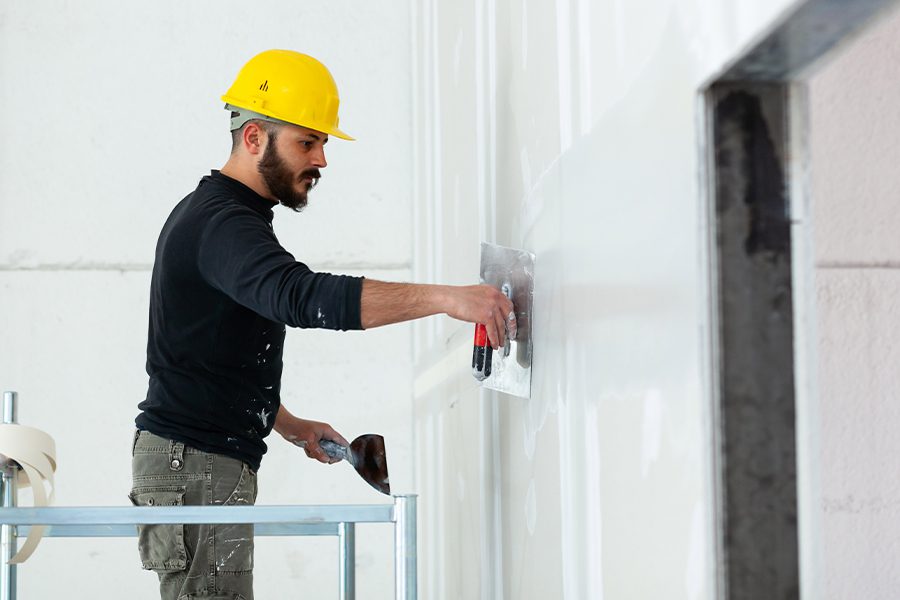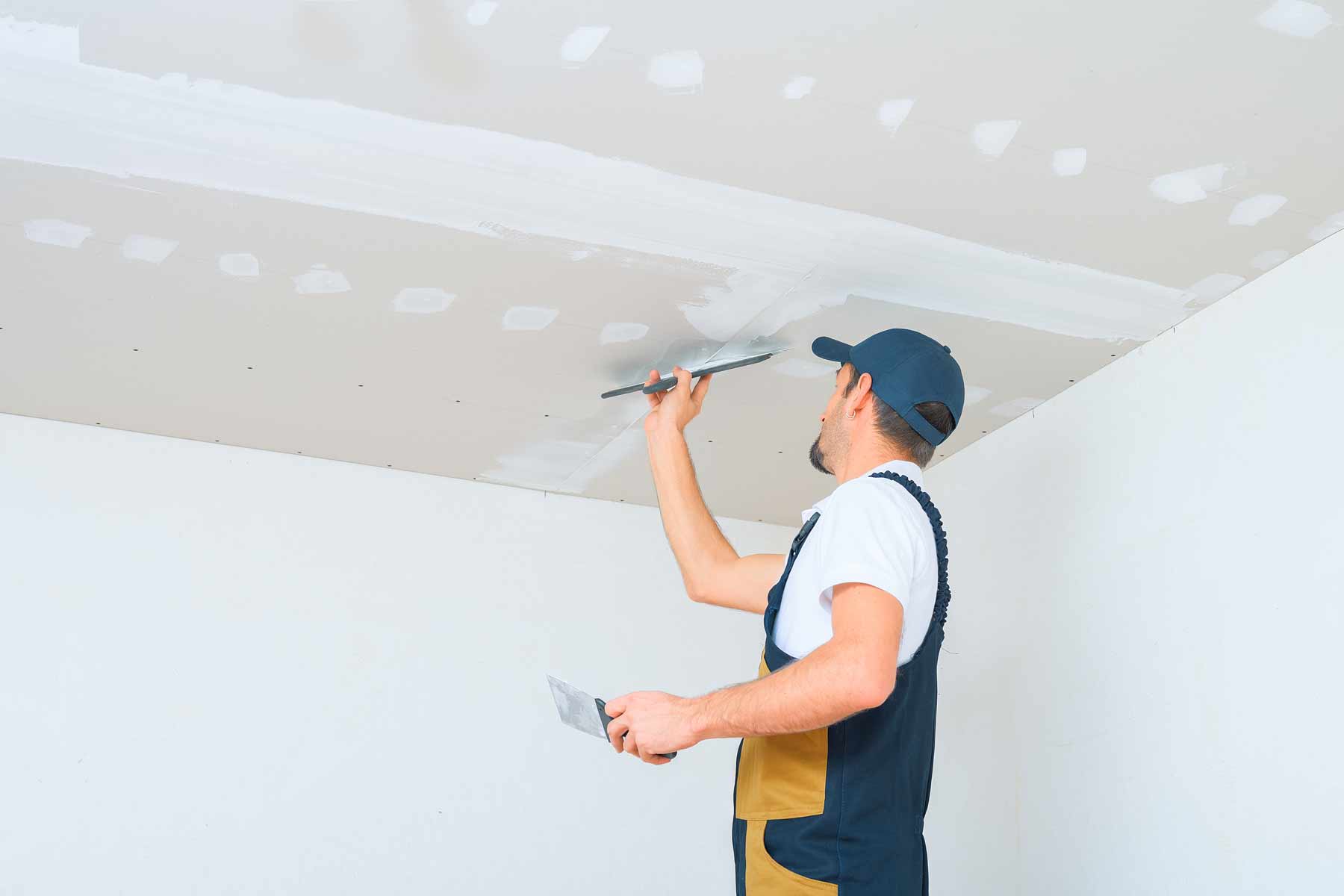Drywall Setup Made Easy: Tips for Perfect Results
Drywall installation is commonly perceived as an overwhelming task, yet with the appropriate method and expertise, it can end up being a convenient endeavor. Understanding techniques for reducing, hanging, and ending up drywall can considerably influence the outcome.
Selecting the Right Products
Selecting the proper products for drywall installation is vital to achieving a resilient and cosmetically pleasing finish. sheetrock repair fort worth. The primary element, drywall sheets, commonly come in different densities, with 1/2-inch sheets being standard for interior walls. For locations calling for additional dampness resistance, such as cooking areas or washrooms, consider using eco-friendly board or concrete board, which are particularly made to withstand humidity

Preparing the Installment Area
Before starting the drywall installation process, it is essential to prepare the setup location completely. A tidy work area decreases the risk of damages to existing items and enables for reliable movement throughout installation.
Next, evaluate the walls and ceiling for any type of blemishes, such as cracks, openings, or mold and mildew. Address these issues in advance; spot any problems and permit sufficient time for repair services to completely dry. Additionally, make sure that electric outlets, buttons, and plumbing are appropriately placed and accounted for, as this will affect drywall positioning.
Think about the ecological problems also. A secure temperature level and humidity degree are essential for optimum attachment and performance of the drywall materials. Make use of a dehumidifier or heating system to develop appropriate conditions. if necessary.
Cutting and Hanging Drywall
The secret to reliable drywall installment hinges on the accurate cutting and dangling of the panels. Begin by gauging the area precisely, thinking about any kind of blockages such as electric outlets or home windows. Utilize a straight side and an energy knife to score the drywall along your measurements, after that break it along the scored line for a tidy break. For even more elaborate cuts, such as around electrical outlets, a drywall saw can be used for accuracy.

Constantly function from the top down and left to right, making sure that you keep a staggered pattern to boost security. Correctly hanging the drywall sets the structure for a smooth coating, inevitably leading to remarkable cause your drywall project.
Taping and Mudding Methods
While proper cutting and dangling of drywall sets the stage, the following important step includes understanding taping and mudding techniques to make sure a smooth finish. Taping is important for reinforcing joints and stopping splits; it entails embedding tape into the used joint compound (mud) Beginning with a high quality fiberglass or paper tape, applying the tape over the joint and pressing it right into the wet mud making use of a taping blade, guaranteeing no air bubbles stay.
As soon as the tape remains in area, use a thin layer of joint compound over the tape, feathering the edges to develop a smooth transition to the drywall surface area. Enable this layer to completely dry completely before sanding it lightly to get rid of blemishes. Repeat this procedure, using additional layers of mud as needed-- generally a couple of coats-- while slowly expanding the application area with each layer to achieve a seamless appearance.
After the last coat dries continue reading this out, sand the surface area with a fine-grit sandpaper till smooth. drywall installation. Bear in mind to use a mask during fining sand to stay clear of breathing in dirt bits. Grasping these taping and mudding strategies is critical for accomplishing a professional-quality coating in your drywall installation
Completing Touches for Excellence
Attaining a flawless drywall installation exceeds taping and mudding; it culminates in the finishing touches that elevate the total appearance. These last steps are critical in making sure a professional-grade surface that improves the aesthetics of your space.
Begin by fining sand the dried out joint compound to produce a smooth surface area. Use a fine-grit sandpaper and a sanding block or post sander for optimum control. Pay particular interest to sides and edges, as these areas tend to need even more meticulous work. After fining sand, clean down the walls with a wet cloth to eliminate any dust bits, making sure a tidy surface for painting.
Following, apply a primer specifically created for drywall. This step is vital, as it helps seal the joint compound and offers a consistent base for the overcoat. When the primer dries, evaluate for any type of flaws, and repair as required.
Verdict
In final thought, successful drywall installation pivots on the cautious option of products, comprehensive preparation of the installation location, and exact execution of reducing and hanging techniques. Mastery of taping and mudding processes is important for achieving a smooth finish.
Drywall setup is often viewed as a challenging job, yet with the ideal technique and expertise, it can end up being a workable venture.Choosing the suitable materials for find out here drywall installation is important to accomplishing a resilient and aesthetically pleasing finish.Prior to starting the drywall setup process, it is vital to prepare the installment area thoroughly. Mastering these taping and mudding strategies is essential for accomplishing a professional-quality finish in your drywall setup.
In final thought, successful drywall installment pivots on the careful choice of materials, complete prep work of the installment area, and precise implementation of reducing and hanging techniques.
Comments on “Reliable Drywall Repair Techniques to Recover Your Wall surfaces”